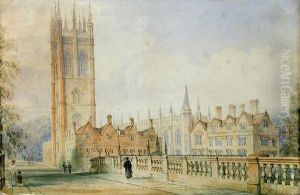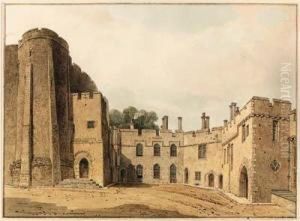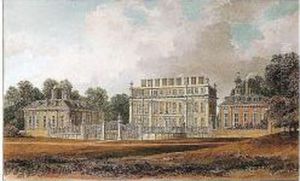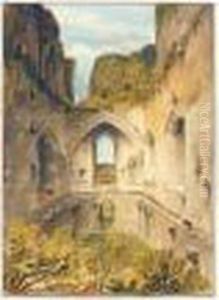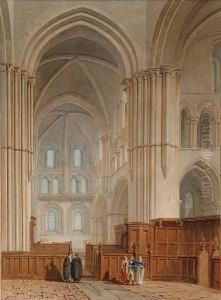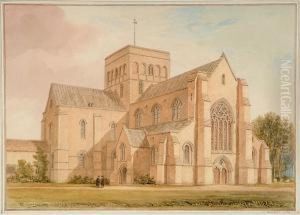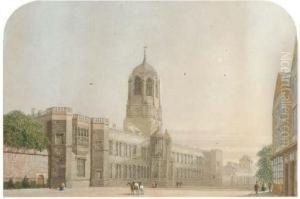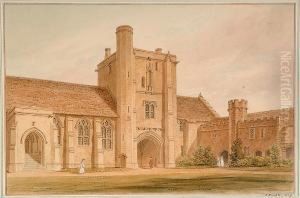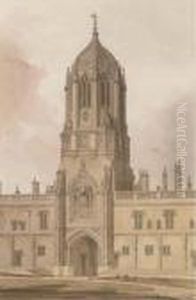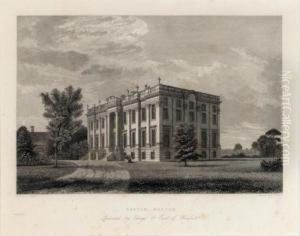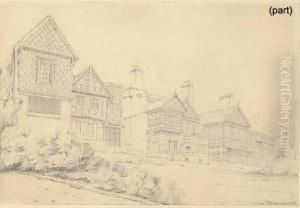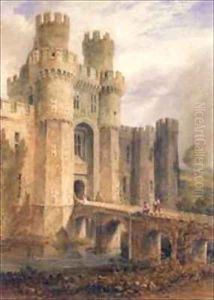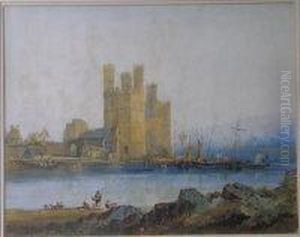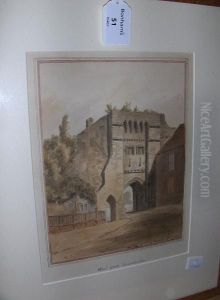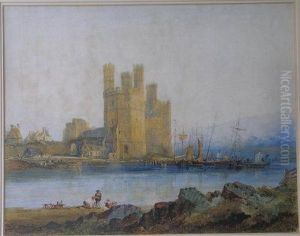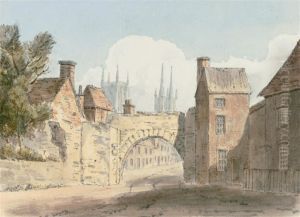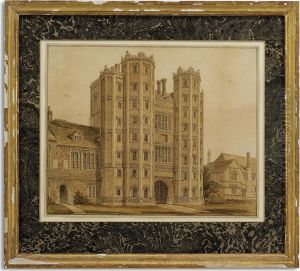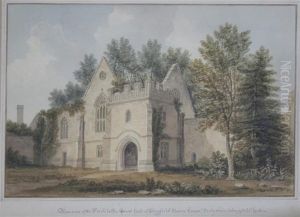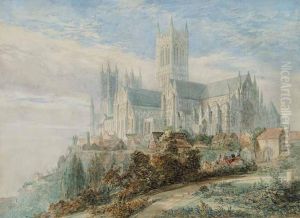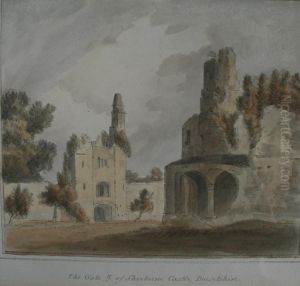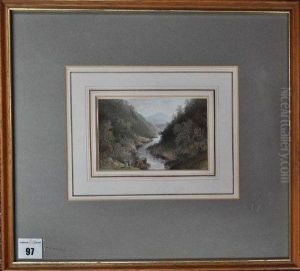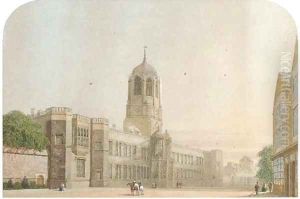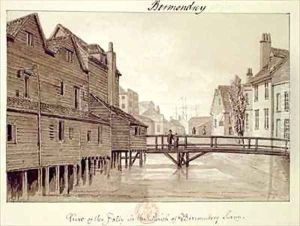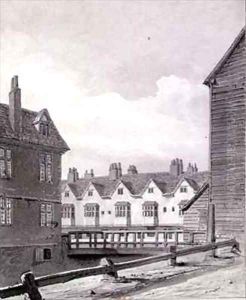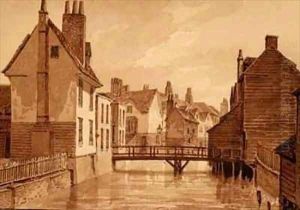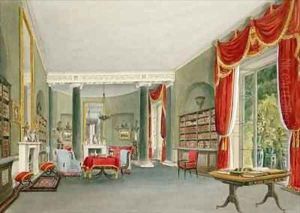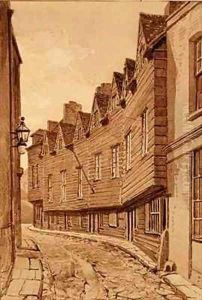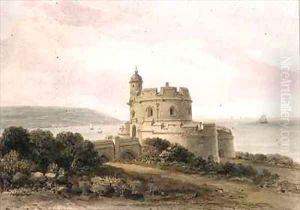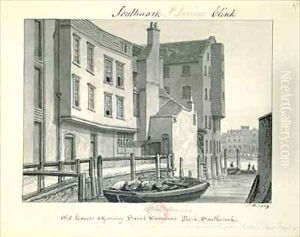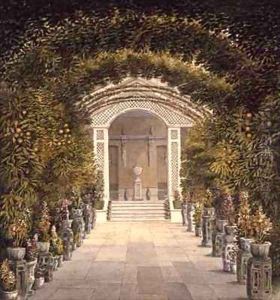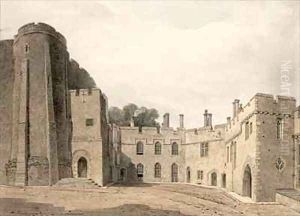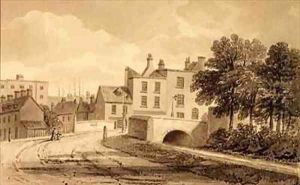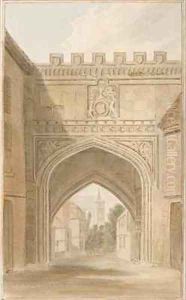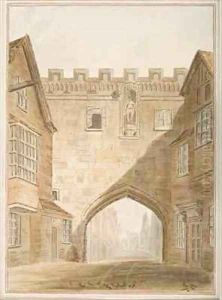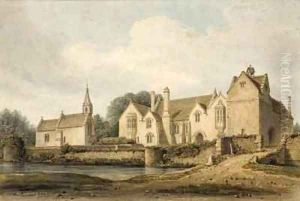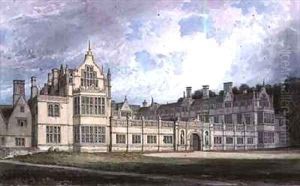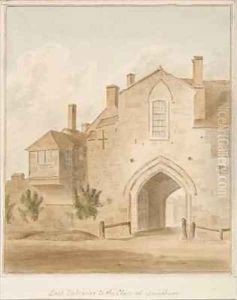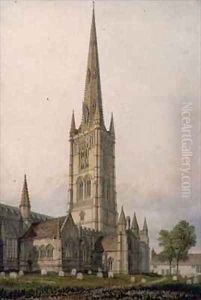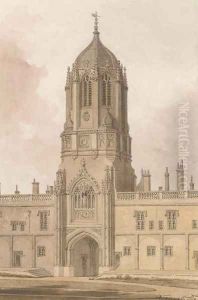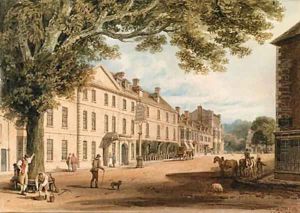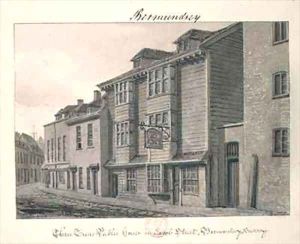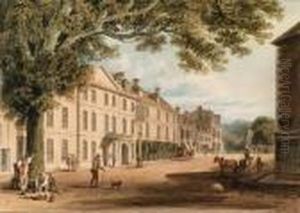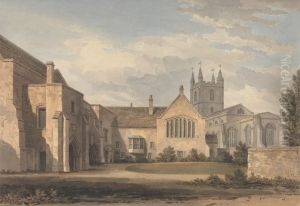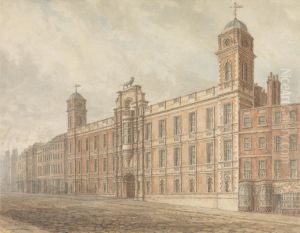John Chessell Buckler Paintings
John Chessell Buckler was an English architect, artist, and author born in 1793 in Calbourne, Isle of Wight. He was the eldest son of the notable artist and architect, John Buckler, who was known for his drawings and paintings of English architecture. Following in his father's footsteps, J.C. Buckler developed a strong interest in Gothic architecture and restoration. He became a prolific artist in his own right, producing a large number of drawings and watercolors of architectural subjects, particularly of churches, which were often used to inform restoration projects.
Buckler's career spanned a period of significant change in the field of architecture, coinciding with the Gothic Revival movement in England. He was not only an accomplished draftsman but also took on architectural commissions. One of his most well-known works is the restoration of the Church of St. Mary in Newington, completed in 1830. Despite his contributions to Gothic Revival architecture, Buckler is perhaps best remembered for his extensive collection of sketches and drawings of historic buildings, which remain valuable records of English heritage.
In addition to his architectural work, Buckler was a prolific writer. He published several books, including 'Remarks on the Errors Affecting the Site of the Holy Sepulchre at Jerusalem' in 1845 and 'A History of the Architecture of the Abbey Church of St. Alban' in 1847. His writings reflect his deep knowledge of architectural history as well as his opinions on contemporary architectural practice.
Buckler lived through the Victorian era, a time of great technological and cultural change. Despite this, he remained focused on the preservation and celebration of medieval architecture. He continued to work and publish throughout his life, maintaining a significant presence in the field of architectural history until his death in 1894, at the remarkable age of 101. Today, John Chessell Buckler is recognized for his contributions to the study and preservation of England's architectural heritage, and his works are consulted by historians and conservationists alike.
